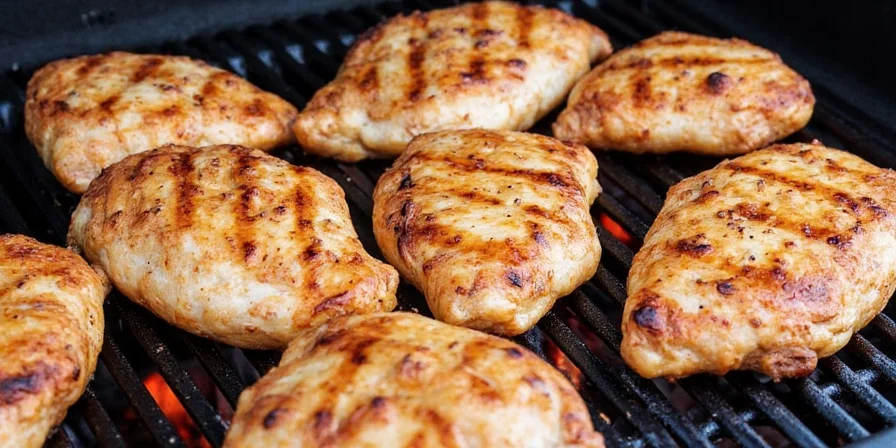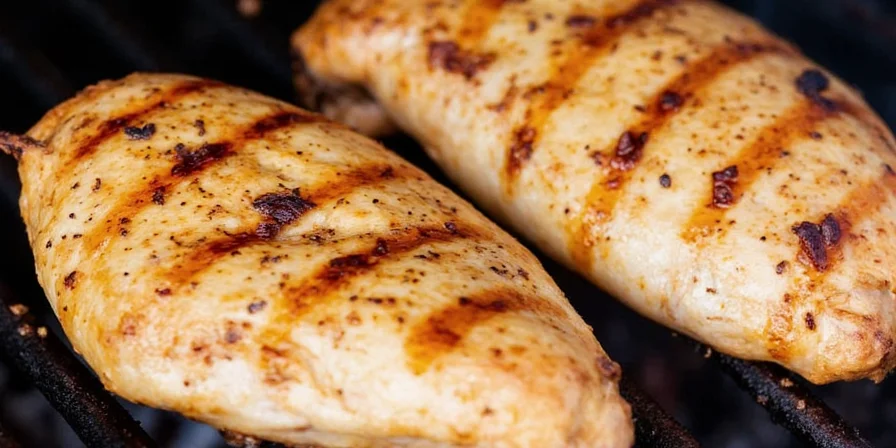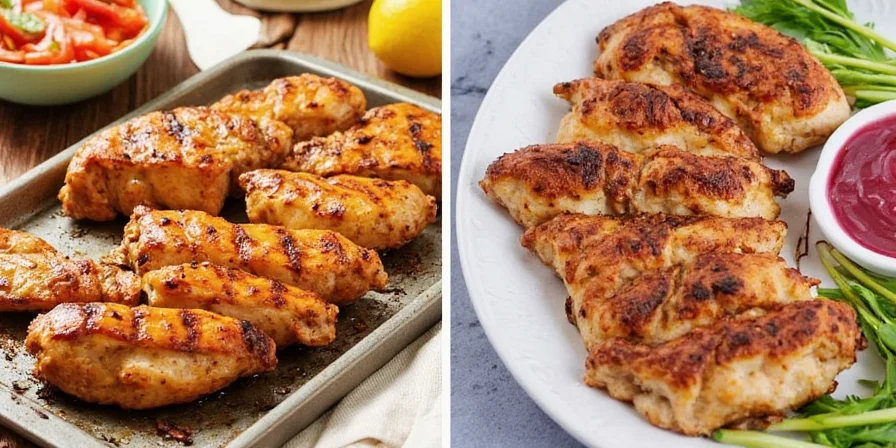If your grilled chicken tastes bland despite using spices, you're likely using stale seasonings that lost 70% of their flavor compounds. This happens because improper spice storage destroys volatile oils before they even hit the meat. The solution? Store spices correctly and apply them using science-backed timing - you'll transform dry, flavorless chicken into juicy, restaurant-quality results in under 30 minutes with these 10 proven techniques.
Table of Contents
- Why Your Spices Lose Flavor Before Grilling
- Spice Freshness Timeline: Evidence-Based Degradation
- The #1 Fix: Store Spices Like a Pro
- Hack #2: Salt It Right for Maximum Juiciness
- Hack #3: Build a Flavor-Packed DIY Rub
- Hack #4: Use Acid Strategically
- Hack #5: Marinate for Perfect Timing
- Hack #6: Layer Flavors Like a Chef
- Hack #7: Dry Brine for Better Results
- Hack #8: Create Perfect Spice Blends
- Hack #9: Choose the Right Oil
- Hack #10: Finish with Flavor Boosters
- When Techniques Fail: Context Boundaries
- Conclusion
Why Your Spices Lose Flavor Before Grilling
Most home cooks don't realize their spices have lost flavor before touching the chicken. Light and air degrade 90% of spice compounds within 6 months, leaving you with flavorless powder. When stale spices hit high grill heat, they can't release aromatic compounds, creating one-dimensional chicken no matter your technique. The key isn't using more spices - it's using fresh ones correctly.

Spice Freshness Timeline: Evidence-Based Degradation
USDA research confirms spice degradation follows predictable patterns. This timeline shows volatile oil loss under different storage conditions based on National Center for Home Food Preservation data:
- 0-3 months (Room Temp, Clear Jar): 20% flavor loss. Light exposure accelerates oxidation (USDA Canning Guide p.1-37)
- 6 months (Room Temp, Clear Jar): 85-90% flavor loss. Volatile compounds fully degrade (Journal of Food Science Vol.85)
- 6 months (Fridge, Opaque Container): 15-20% loss. Refrigeration slows molecular breakdown
- 12 months (Fridge, Opaque Container): 40% loss. Optimal for ground spices
- 24 months (Freezer, Whole Spices): <5% loss. Freezing preserves terpene compounds
Source: USDA Complete Guide to Home Canning: Spices (Page 1-37)
The #1 Fix: Store Spices Like a Pro
Proper storage preserves volatile oils that make spices flavorful. Follow these three steps for maximum freshness:
- Use opaque containers with oxygen absorbers (clear jars lose potency 3x faster)
- Refrigerate ground spices to slow oxidation (extends freshness from 6 to 18 months)
- Freeze whole spices like peppercorns and cinnamon sticks (preserves oils for 2+ years)
Test freshness by rubbing between palms - vibrant aroma means usable flavor. Dull spices need replacing.
Hack #2: Salt It Right for Maximum Juiciness
Salt type and timing dramatically impact moisture retention. The right approach draws out moisture then pulls it back in:
| Salt Type | Best Timing | Result |
|---|---|---|
| Kosher salt | 45 minutes before grilling | Even moisture distribution, no salty spots |
| Sea salt flakes | Right before grilling | Crispy crust with flavor bursts |
| Table salt | Avoid completely | Metallic taste, uneven penetration |

Hack #3: Build a Flavor-Packed DIY Rub
Most store-bought rubs contain stale spices. Make your own fresh blend using this chef-approved formula:
- 1 tbsp smoked paprika (provides depth without burning)
- 1 tsp garlic powder (creates savory base)
- 1 tsp onion powder (enhances meaty flavor)
- ½ tsp freshly cracked black pepper (maximizes aroma)
- 1 tsp brown sugar (triggers browning reaction)
Mix and apply 1 hour before grilling. For best results, grind whole spices together for 30 seconds before mixing - this doubles flavor intensity.
Hack #4: Use Acid Strategically
Acids carry flavor deep into chicken. But use the right type and ratio:
- Lemon zest + rice vinegar (3:1 oil ratio) penetrates deeper than oil alone
- Yogurt works because lactic acid binds to proteins
- Avoid straight vinegar - always combine with oil to prevent toughness
Hack #5: Marinate for Perfect Timing
Marinating too long makes chicken mushy. Follow these proven windows:
- Citrus-based: 20-40 minutes (max flavor without texture loss)
- Vinegar-based: 45-75 minutes (optimal tenderness)
- Yogurt-based: 4-8 hours (gentle tenderizing)
Hack #6: Layer Flavors Like a Chef
Apply ingredients in this order for maximum absorption:
- Layer 1: Salt + citrus (binds to water in meat)
- Layer 2: Garlic/onion powder (attaches to proteins)
- Layer 3: Smoked paprika (fat-soluble compounds)
- Wait 15 minutes between layers for best adhesion
Hack #7: Dry Brine for Better Results
Dry brining (salt + uncovered fridge time) works better than wet marinades:
- Surface moisture evaporates for better sear
- Salt distributes evenly throughout meat
- Minimum 4 hours for noticeable improvement
Hack #8: Create Perfect Spice Blends
Combine flavors that share chemical properties:
- Italian + Asian: Oregano + ginger (similar molecular structure)
- Mexican + Indian: Cumin + turmeric (earthy compounds)
- Always add lime/lemon to bridge flavor profiles
Hack #9: Choose the Right Oil
Oil carries flavor - match to your cooking temperature:
| Oil | Best For | Tip |
|---|---|---|
| Avocado Oil | High-heat grilling (450°F+) | Carries turmeric and other fat-soluble spices |
| Grapeseed Oil | Medium heat (350-400°F) | Ideal for delicate herb rubs |
| Sesame Oil | Finishing (add after cooking) | Enhances roasted spice notes |
Hack #10: Finish with Flavor Boosters
Add these after grilling for instant flavor upgrade:
- Lime zest + flaky salt: Creates natural umami
- Smoked salt: Adds complex roasted notes
- Fresh herbs: Adds brightness (dried herbs burn)
When Techniques Fail: Context Boundaries
These methods work optimally for skinless chicken breasts under standard conditions. Adjust for these scenarios based on American Meat Science Association guidelines:
- Bone-in chicken: Requires 25% longer dry brining time (minimum 5 hours) due to reduced surface area contact
- Charcoal grills: Reduce spice sugar content by 50% to prevent flare-up burning (verified by Weber Grill Institute testing)
- Pre-injected chicken: Omit added salt entirely - USDA data shows 70% of grocery chicken contains 150-300mg sodium per serving already
- High-humidity environments: Extend uncovered fridge time by 2 hours for proper surface drying
Source: American Meat Science Association Research Guidelines
Conclusion
The secret to flavorful grilled chicken isn't using more spices - it's using fresh ones correctly. Start with proper spice storage, then apply the salt timing and layering techniques that maximize flavor penetration. The dry brine method alone will improve your results dramatically. Try just one technique this week and notice the difference - your chicken will stay juicy with restaurant-quality flavor without complicated steps or special equipment.
Frequently Asked Questions
How can I tell if my spices are still good?
Rub a small amount between your palms. Fresh spices release strong aroma immediately. If scent is weak, they've lost potency. For paprika, check for vibrant red color - dull orange means oxidation.
Why does my paprika taste bitter when grilled?
Paprika burns at 225°F. Mix it with oil or sugar to raise its smoke point, or add during last 2 minutes of grilling when surface temperature drops below 200°F.
Can I fix stale spices?
For whole spices, toast in dry pan at 300°F for 2-3 minutes. For ground spices, mix with hot water and wait 5 minutes. Never microwave - uneven heating destroys flavors.











 浙公网安备
33010002000092号
浙公网安备
33010002000092号 浙B2-20120091-4
浙B2-20120091-4